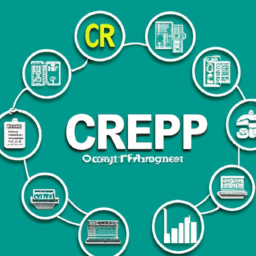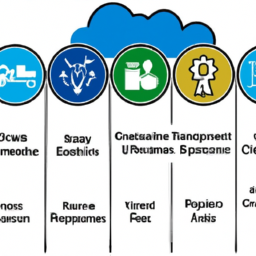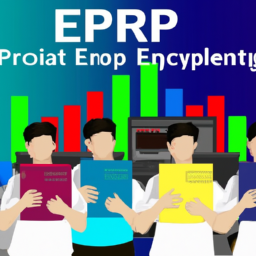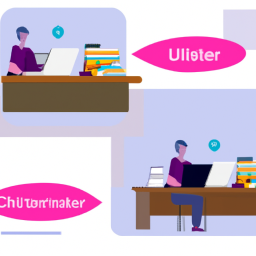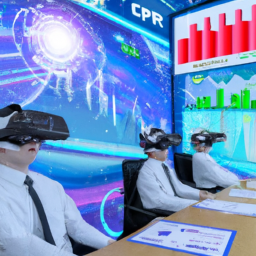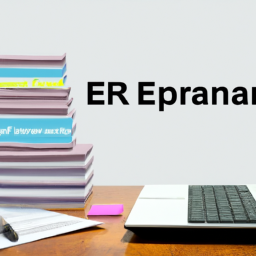Are you preparing for the ERP exam? Well, buckle up because we’ve got you covered with the 10 key topics you must know.
Imagine yourself diving into the world of ERP systems, exploring the implementation process, delving into modules and functionalities, and mastering database management, data migration, and integration.
Get ready to analyze reporting and analytics, navigate change management, and make informed decisions about ERP vendors.
Plus, we’ll give you a glimpse into the future trends of ERP technology.
Let’s begin this knowledge-packed journey!
Key Takeaways
- ERP system is a software solution that helps manage and integrate business processes.
- ERP modules focus on specific areas of functionality such as finance, human resources, and inventory management.
- Data migration and integration in ERP require effective data mapping strategies and data cleansing techniques.
- User access control, reporting and analytics, change management, and vendor selection are important aspects of ERP implementation.
ERP System Overview
You need to understand what an ERP system is and how it functions in order to pass the exam.
An ERP system, or Enterprise Resource Planning system, is a software solution that helps organizations manage and integrate various business processes, such as finance, human resources, and supply chain management. This comprehensive system offers numerous benefits, including improved efficiency, streamlined operations, and enhanced decision-making capabilities.
When it comes to ERP software selection, it is crucial to consider factors such as scalability, customization options, and compatibility with existing systems. Evaluating vendor reputation, customer reviews, and cost-effectiveness is also essential.
ERP Implementation Process
The ERP implementation process involves various stages and requires careful planning. When embarking on an ERP project, effective planning is crucial to ensure successful implementation. Here are some key points to consider during the ERP implementation process:
-
ERP Project Planning: Developing a comprehensive project plan that outlines project goals, milestones, and resource allocation is essential.
-
Business Process Analysis: Conducting a thorough analysis of existing business processes helps identify areas for improvement and customization within the ERP system.
-
Data Migration: Migrating data from legacy systems to the new ERP system requires careful planning and execution to ensure data integrity and accuracy.
-
Customization and Configuration: Tailoring the ERP system to meet specific business needs may involve configuring modules, developing custom interfaces, or integrating with other systems.
-
ERP Training Strategies: Implementing effective training programs to ensure end-users are proficient in using the new ERP system is critical for user adoption and system success. Training methods can include workshops, online courses, and user documentation.
Modules and Functionalities in ERP
Modules and functionalities are key components of an ERP system. They provide specific features and capabilities to support various business processes.
In an ERP system, modules are individual units that focus on specific areas of functionality. Examples include finance, human resources, sales, inventory management, and production planning.
Each module is designed to handle specific tasks and processes within the organization. For instance, the finance module handles financial transactions like accounts payable and receivable, general ledger, and financial reporting.
The human resources module manages employee information, payroll, benefits, and recruitment. The sales module tracks customer orders, manages pricing and discounts, and generates sales reports.
The inventory management module handles stock levels, reorder points, and inventory tracking.
Database Management in ERP
Database management is an essential aspect of ERP. It involves organizing and maintaining data to ensure efficient data retrieval and accurate reporting. To optimize your database, consider implementing the following strategies:
- Regularly clean up and remove redundant or outdated data to improve system performance and reduce storage requirements.
- Use indexing techniques to speed up data retrieval and queries.
- Implement caching mechanisms to store frequently accessed data in memory, reducing the need for disk access.
- Utilize partitioning to divide large tables into smaller, more manageable chunks, improving query performance.
- Regularly backup your database to protect against data loss and ensure quick recovery in the event of a system failure.
Data Migration and Integration in ERP
When it comes to data migration and integration in ERP, there are several key points to consider.
First, you need to have effective data mapping strategies in place to ensure that data from different sources can be properly aligned and integrated into the ERP system.
Second, system compatibility challenges may arise when trying to migrate or integrate data from legacy systems or different software platforms, so it’s important to anticipate and address these challenges proactively.
Data Mapping Strategies
One of the key things to understand in data mapping strategies is how different data elements are connected and related to one another. This involves analyzing the structure and format of the data to determine how it should be transformed and normalized for effective integration.
In order to evoke emotion in the audience, consider these five key points:
- Ensuring seamless data flow between systems
- Avoiding data duplication and inconsistencies
- Improving data accuracy and reliability
- Enhancing data visibility and accessibility
- Streamlining data integration processes
By considering these factors, you can develop robust data mapping strategies that facilitate efficient data transformation and normalization, ultimately leading to successful data migration and integration in your ERP system.
However, as you navigate through these strategies, you may encounter system compatibility challenges that need to be addressed to ensure smooth data mapping and integration processes.
System Compatibility Challenges
To overcome system compatibility challenges, you’ll need to ensure that all software and hardware components are compatible and can seamlessly communicate with each other. System integration and software compatibility are crucial for the smooth functioning of any system.
Compatibility issues can occur when different software applications or hardware devices are unable to work together effectively. This can lead to data inconsistencies, errors, and even system failures. It is essential to address these challenges by conducting thorough compatibility tests and ensuring that all components meet the required standards.
Additionally, proper system integration techniques should be employed to enable seamless communication between different systems. By addressing these challenges, you can ensure that your system operates efficiently and effectively.
Now let’s move on to the next topic, which is data cleansing techniques.
Data Cleansing Techniques
Ensure that all data in your system is accurate and reliable by implementing effective data cleansing techniques.
Data cleansing is the process of identifying and correcting or removing errors, inconsistencies, and inaccuracies in your data. It is crucial for maintaining data integrity and ensuring the success of your business operations.
To help you achieve optimal data quality, here are five essential data cleansing techniques:
- Deduplication: Identify and remove duplicate records from your database.
- Standardization: Normalize data formats, such as addresses, phone numbers, and dates.
- Validation: Verify the accuracy and completeness of data using predefined rules.
- Transformation: Convert data into a standardized format to facilitate analysis.
- Error Handling: Identify and correct errors, such as missing or invalid values.
Security and User Access Control in ERP
Understand the importance of security and user access control in ERP systems to protect sensitive data.
Security measures play a crucial role in safeguarding critical information and preventing unauthorized access. ERP systems should have robust security mechanisms in place, such as strong encryption algorithms and firewalls, to protect against cyber threats.
User access control ensures that only authorized individuals have access to specific data and functionalities within the ERP system. This is achieved through the implementation of user privileges, which define the level of access each user has based on their role and responsibilities.
Reporting and Analytics in ERP
Reporting and analytics in ERP provide valuable insights into business performance, helping organizations make data-driven decisions and identify opportunities for growth. With the increasing amount of data being generated by businesses, effective reporting and analytics capabilities are essential for success.
However, there are challenges that organizations may face when it comes to reporting in ERP systems. These challenges include:
- Data integration and cleansing: Ensuring that data from various sources is accurately integrated and cleansed for accurate reporting.
- Data visualization: Presenting data in a visually appealing and easy-to-understand format for better analysis.
- Data security: Protecting sensitive data while still allowing authorized users to access and analyze it.
- Data accuracy and consistency: Ensuring that the data used for reporting is accurate and consistent across all reports.
- Performance and scalability: Handling large volumes of data and generating reports quickly and efficiently.
To overcome these challenges, organizations need to invest in robust reporting and analytics tools that can handle complex data analysis and provide accurate and timely insights.
Change Management in ERP
Now that you understand the importance of reporting and analytics in ERP, let’s delve into the challenges of change management in ERP implementations.
Change management refers to the processes and strategies used to prepare and support individuals and organizations in transitioning from their current state to a desired future state. Implementing an ERP system involves significant changes in processes, roles, and responsibilities, which can be met with resistance and skepticism.
Organizational readiness plays a crucial role in overcoming these challenges. It involves assessing the current state of the organization, identifying potential barriers to change, and developing strategies to address them. It is important for organizations to ensure that employees are adequately trained and prepared for the changes ahead.
With a solid change management plan and organizational readiness, ERP implementations can be smoother and more successful.
Now, let’s move on to the next section about ERP vendor selection and evaluation.
ERP Vendor Selection and Evaluation
When choosing an ERP vendor, you should consider factors such as their industry experience, customer support, and pricing options. Evaluating the right ERP vendor is crucial for the success of your business. Here are some key criteria to consider:
- Reputation: Look for vendors with a strong reputation in the industry.
- Functionality: Ensure that the vendor’s ERP system meets your specific business needs.
- Scalability: Consider the vendor’s ability to handle future growth and expansion.
- Integration: Evaluate the vendor’s ability to integrate with your existing systems.
- Support: Assess the level of customer support and training provided by the vendor.
Choosing the right ERP vendor requires careful evaluation of these criteria. Take the time to research and compare different vendors to make an informed decision that aligns with your business goals.
Future Trends in ERP Technology
As technology continues to advance, future trends in ERP are expected to include increased automation, enhanced data analytics, and improved mobile accessibility. These future innovations will revolutionize the way businesses operate and manage their resources.
Automation will streamline processes, eliminating manual tasks and reducing human error. Enhanced data analytics will provide organizations with valuable insights, allowing them to make data-driven decisions and optimize their operations. Improved mobile accessibility will enable employees to access ERP systems on the go, increasing productivity and efficiency.
These trends will not only improve the functionality of ERP systems but also drive industry adoption. As businesses recognize the benefits of these advancements, they will be more inclined to invest in ERP technology, leading to widespread adoption across various industries.
Frequently Asked Questions
What Are the Common Challenges Faced During ERP System Implementation?
When it comes to implementing an ERP system, there are common challenges that you may face.
The implementation process can be complex and time-consuming, requiring careful planning and coordination.
Some challenges include:
- Data migration: involves transferring existing data to the new system accurately.
- System integration: requires integrating the ERP system with other existing systems.
- User resistance: can arise because of changes in processes and workflows.
- Training: is essential to ensure that users can effectively utilize the new system.
How Does ERP Software Help in Streamlining Business Processes?
ERP software helps streamline business processes by improving efficiency and optimizing workflows. It centralizes all essential information and automates repetitive tasks, eliminating manual errors and reducing time-consuming processes.
With ERP, you can easily track and manage inventory, sales, finance, and customer data in real-time. It also allows for seamless communication and collaboration between departments, ensuring smooth operations and better decision-making.
ERP software is essential for modern businesses looking to stay competitive and achieve operational excellence.
What Are the Benefits of Data Migration and Integration in Erp?
You’ll love the benefits of data migration and integration in ERP. With improved data accuracy, your business processes will be streamlined and efficient.
Let’s talk about the techniques for data transformation and validation strategies that make this possible.
By seamlessly transferring your data and integrating it into your ERP system, you’ll experience the power of accurate and synchronized information.
Get ready to take your business to the next level with these game-changing benefits.
How Can Security and User Access Control Be Efficiently Managed in an ERP System?
To efficiently manage security and user access control in an ERP system, you need robust security management practices.
This involves implementing authentication mechanisms, such as passwords and multi-factor authentication, to ensure only authorized users can access the system.
Additionally, role-based access control can be used to assign specific privileges to different user roles, limiting their access to sensitive data.
Regular audits and monitoring should be conducted to identify and address any security vulnerabilities.
Overall, a proactive and comprehensive approach is necessary to protect your ERP system from unauthorized access and potential security breaches.
What Are the Factors to Consider When Selecting an ERP Vendor for Your Organization?
When selecting an ERP vendor for your organization, there are several factors you need to consider.
First, assess the vendor’s experience and expertise in implementing ERP systems. Look for a vendor who understands your industry and has a track record of successful implementations.
Additionally, consider the vendor’s support services, such as training and ongoing technical support.
It’s also important to evaluate the vendor’s financial stability and long-term viability.
Taking these factors into account will help ensure you choose the right ERP vendor for your organization.
Conclusion
In conclusion, you have gained valuable insights into the 10 key topics covered in the ERP exam.
By understanding the ERP system overview, implementation process, modules and functionalities, database management, data migration and integration, reporting and analytics, change management, vendor selection and evaluation, and future trends, you are equipped with the necessary knowledge to excel in the ERP field.
Just like a well-oiled machine, your understanding of these topics will enable you to navigate the complex world of ERP with ease and efficiency.




